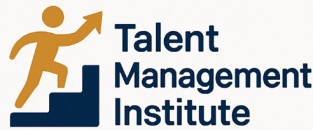Understanding the Role of Coaching and Mentoring in Talent Management
The Impact of Coaching and Mentoring in Talent Management
In today's competitive business landscape, organizations are increasingly recognizing the value of integrating coaching and mentoring into their talent management strategies. These practices are not just buzzwords; they are crucial components that can significantly enhance professional growth and career development within a company.
Coaching and mentoring serve distinct yet complementary roles. While coaching focuses on enhancing specific skills through structured training sessions, mentoring offers a broader scope, providing guidance and support for personal and professional development. This dual approach helps create a supportive network that fosters a coaching culture, benefiting both individuals and the organization as a whole.
Why Coaching and Mentoring Matter
Implementing a robust coaching mentoring program can lead to a more engaged and motivated workforce. Mentors coaches play a pivotal role in nurturing talent, helping employees navigate their career paths and achieve their goals. This, in turn, contributes to a positive workplace culture where professional and personal growth is encouraged.
Moreover, a well-structured mentoring network can help identify potential leaders within the organization, preparing them for future roles. By investing in coach training and coaching supervision, companies can ensure that their coaches mentors are equipped with the necessary skills to guide others effectively.
Building a Foundation for Success
To effectively integrate coaching and mentoring into talent management, it is essential to understand the specific needs of your organization. This involves identifying key participants who can drive the program and designing a framework that aligns with your company's objectives. A successful program will help employees find their strengths and develop them through targeted skills training and training sessions.
For those interested in exploring the essential traits that contribute to effective team dynamics, this essential guide offers valuable insights.
Identifying Key Participants for Your Network
Pinpointing the Right Participants
Creating an effective coaching and mentoring network starts with identifying the key participants who will contribute to its success. These individuals should bring a mixture of experience, skills, and willingness to grow both personally and professionally. Finding the right mix of talent among potential mentors and mentees is crucial in developing a supportive network that fosters career development.
To build a balanced network, focus on these core elements:
- Diverse Skill Sets: A mentoring network should encompass a range of skills and expertise. This diversity helps individuals learn from one another, benefiting from varied training sessions and coaching experiences. Consider reaching out to professionals from different departments to enhance this diversity.
- Willingness to Learn: Both mentors and mentees should possess a genuine desire to learn and grow. This commitment is essential for the success of both their individual journeys and the overall network. Look for individuals who actively seek opportunities for skills training and coaching training.
- Mentor and Coach Experience: Experienced mentors and coaches are invaluable, offering guidance and insights drawn from their professional lives. However, emerging mentors looking to expand their skills should not be overlooked, as they can bring fresh perspectives rooted in modern practices.
- Shared Values and Culture: Align participants who share common values and cultural understanding, fostering a cohesive mentoring culture. Shared visions and goals will naturally lead to more fruitful interactions.
- Commitment to Community: Participation in a mentoring coaching network requires a commitment to community engagement. It's not just about individual growth but also about contributing to the professional growth of others.
Registration processes can be a practical way to formalize commitments. This step helps potential mentees and mentors reflect on their goals and expectations within the mentoring coaching framework. Moreover, having a well-structured registration system ensures a thorough integration into the community of practice.
To delve deeper into maximizing the mentoring network’s potential and strategically identifying participants, explore maximizing potential with strategic resource groups. This resource can provide insights into fostering a vibrant coaching culture and a high-performing mentoring network.
Designing a Framework for Your Coaching and Mentoring Network
Crafting a Blueprint for Coaching and Mentoring Networks
Designing an effective framework for your coaching and mentoring network requires a strategic approach that aligns with the overall talent management strategy of an organization. It centers on creating a structure that integrates seamlessly into your corporate culture while offering tangible benefits to both mentors and mentees. Here’s how you can build an effective framework:Establish Clear Objectives
First and foremost, identify what you hope to achieve through your coaching and mentoring initiatives. Whether you are fostering professional growth, improving specific skills, or enhancing community within your organization, establishing clear objectives will provide direction and purpose.Develop the Structure
- Define Roles: Clearly outline the responsibilities of both coaches and mentors. Consider different mentoring models and decide whether a one-on-one, group, or even location-specific approach best suits your company culture and goals.
- Select Training Options: Implement rigorous
Create a Supportive Ecosystem
Develop a community that encourages open communication and trust. This supportive network should also include resources such as guides, checklists, and access to tools, thereby enhancing the mentoring coaching experience for both parties.Integrate a Feedback Mechanism
Incorporate methods for ongoing feedback, which will help participants evaluate progress, mark achievements, and reassess the mentoring course direction as needed. Regular check-ins and feedback sessions foster an environment of continuous learning and professional development. Designing an effective coaching and mentoring network with these foundational components will help establish a robust program that serves as a catalyst for personal and professional growth.Implementing the Coaching and Mentoring Program
Rolling Out the Coaching and Mentoring Structure
Creating an effective coaching and mentoring network demands thoughtful implementation. This process begins with establishing clarity about the program's objectives, as previously outlined in our series. It's essential to align these objectives with the broader talent management goals of your organization. When implementing your coaching and mentoring program, consider the following key steps:- Option for Flexible Frameworks: Offering a variety of coaching and mentoring formats such as one-on-one, group settings, or even virtual sessions can cater to different learning preferences and schedules of the professionals involved.
- Structured Training Sessions: A successful network involves both initial and ongoing training. Training sessions for mentors and coaches are vital to ensure they have the skills needed to effectively guide their mentees and support their professional growth.
- Registration and Orientation: Clear registration procedures for both mentors and mentees will help participants know what to expect. An orientation session can further help both parties familiarize themselves with the network's culture and processes.
- Supportive Network Environment: Cultivating a coaching culture within your organization encourages more open communication and trust. This environment helps mentors and mentees feel supported in their journey, which is essential for personal and professional growth.
- Coaching Supervision: Providing access to professional supervision for mentors and coaches can lead to continuous improvement. Supervision sessions can support them in refining their strategies and better meeting the needs of their mentees.
Measuring Success and Gathering Feedback
Evaluating Progress and Feedback Gathering Methods
In order to ensure the success of your coaching and mentoring network, it is crucial to implement effective methods for measuring progress and gathering feedback. This task involves multiple aspects and shouldn’t be underestimated, as it will provide insights into the impact of your program on both individual and organizational levels.
First and foremost, it is important to set clear and measurable objectives at the early stages of your coaching and mentoring program. These goals should align with wider talent management aims and focus on aspects such as professional growth, skills development, and fostering a coaching culture. With these objectives in place, it's possible to track the program's overall effectiveness and identify areas for further improvement.
Developing a consistent feedback loop is integral to refining your network of mentors and coaches. Implement surveys, interviews, or focus groups to collect feedback from all participants, including mentors, coaches, and mentees. This feedback will help you assess personal and professional growth outcomes, along with the mentors’ and coaches’ effectiveness.
- Surveys or Questionnaires: Use both qualitative and quantitative questions to gather comprehensive feedback on participants’ experiences. This method can help detect recurring themes and pinpoint areas needing enhancement.
- Regular Check-ins: Implement frequent check-in sessions to evaluate progress and address concerns promptly. This ensures that participants feel supported and engaged throughout the coaching process.
- Performance Metrics: Establish performance indicators that correspond to the objectives set at the beginning. Metrics such as career development milestones, skills acquisition, and professional relationships can be indicative of the program's success.
Monitoring the progress and performance of your mentoring coaching network will help you to not only evaluate its success but also make strategic adjustments as needed. Remember, a supportive network that embraces feedback leads to a more robust coaching mentoring framework over time, fostering a community of growth-oriented professionals.
Overcoming Challenges in Coaching and Mentoring Networks
Common Obstacles and Solutions in Developing a Coaching and Mentoring Network
Navigating the complexities of a coaching and mentoring network can be challenging for any organization. It's important to acknowledge potential hurdles to be better prepared. Here are some common obstacles you might face and solutions to overcome them:- Resistance to Change: Many organizations face resistance from individuals who are unaccustomed to a coaching culture. To mitigate this, emphasize the benefits of personal and professional growth. Highlight success stories and how these programs can help improve skills and career development.
- Misalignment of Expectations: Clear communication between mentors, coach mentors, and mentees is essential. Establishing objectives during training sessions and maintaining ongoing dialogue will help align expectations and maintain a supportive network environment.
- Lack of Engagement: Sometimes, participants may not actively engage in the mentoring coaching process. Organize interactive training courses and regular coaching supervision meetings to keep everyone motivated and connected. These sessions can also integrate community-building activities.
- Insufficient Training for Coaches and Mentors: Without proper training, mentors and coaches might struggle to provide the desired guidance. Investing in comprehensive coach training programs ensures that mentors coaches are equipped with the necessary skills and experience.
- Sustainability Issues: Maintaining an effective coaching mentoring network over time requires management support and the involvement of key professionals. Regular feedback and adaptive strategies will help in sustaining interest and ensuring the network remains beneficial.
- Measurement and Feedback Gaps: Tracking the success of the mentoring network can be difficult without proper metrics. Consider implementing evaluation frameworks that measure both qualitative and quantitative aspects of the program. Regular feedback from participants can provide insights on areas for improvement.






